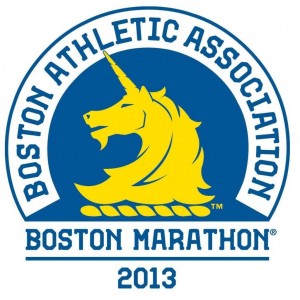As an orthopedic specialist, I see wrist injuries more commonly among people who participate in sporting activities, such as gymnastics, contact sports, skiing, skateboarding, snowboarding, and racquet sports. Below I will explain the four common mechanisms of injury, the common wrist sports injuries, and how these injuries are treated.
The wrist allows you to properly position your hand, representing arguably one the most complicated joints in the body. There are 15 bones and 27 articular surfaces in the wrist, not to mention its elaborate system of muscles, tendons and ligaments. Ligament injury is quite common among athletes, as the repetitive action of the wrist puts athletes at risk for injury. Wrist sprains result from a torn or partially torn ligament, and wrist strains are the result of a torn or partially torn tendon. The most common wrist fractures among athletes include: distal radius fractures and scaphoid fractures.
The Four Mechanisms of Wrist Injury
Throwing – With throwing injuries, there is an overuse of the wrist. These are common in baseball players, tennis athletes, and racquet ball participants.
Weight-bearing – I see many weight-bearing injuries among those who participate in gymnastics, weightlifting, and cheer-leading.
Twisting – With a twisting injury, the wrist suffers from a rapid rotation that disrupts the stability of the wrist. I see this type of injury a lot with radical skateboarders and snowboarders.
Impact – More common in football athletes, I treat impact injuries that result from either a direct impact or a fall onto an outstretched hand.
Wrist Sprains
The most common wrist injury among athletes is a sprain of the wrist. This often is an injury to one of the ligaments – the connective tissue that attaches one bone to another. Most sprains occur when the wrist is forcefully bent during a fall on an outstretched hand. Wrist sprains can be mild or severe, and I grade them based on the degree of injury. A grade 1 sprain indicates a stretched ligament without apparent tearing. A grade 2 sprain, however, involves partial tearing of a ligament. With a grade 3 sprain indicates ligaments are completely torn.
Distal Radius Fracture
The most common fracture is called a “distal radius fracture.” A distal radius fracture is a break that occurs at the wrist end of the radius bone. These breaks are common among athletes and can be mistaken for sprains. Wrist fractures often occur during a fall onto an outstretched hand. With fractures of the wrist, the break can occur in four ways: intra-articular, extra-articular, open, or comminuted (in many parts). Many can be treated with casting alone, though some require surgery.
Scaphoid Wrist Fracture
The scaphoid bone is one of the smaller bones of the wrist, but it is one that commonly breaks during sporting injuries. This bone is located on the thumb side of the wrist, and can be difficult to treat due to its tenuous blood supply. As with most wrist injuries, a break to the scaphoid bone typically occurs from falling onto an outstretched hand. Treatment usually requires casting if not displaced, or surgery if displaced.
Symptoms of Significant Wrist Injuries
- Pain at the time of injury
- Swelling
- Bruising or discoloration
- Difficulty moving the wrist
- A “popping” or tearing sensation during the trauma
- Warmth and tenderness of the skin
Treatment for Wrist Injuries
Treatment really depends on the type of injury you have. For mild sprains, I generally recommend the “RICE” method and over-the-counter pain relievers, like Tylenol or Motrin.
RICE
R – Rest the wrist for around 48 hours.
I – Ice the injured area to reduce swelling (use a pack wrapped in a towel).
C – Compress the wrist with an elastic ACE wrap.
E – Elevate the injury above heart level.
Nonsurgical Treatment
Simple Sprain –With mild to moderate wrist sprains, you will need to wear a splint for 1 to 3 weeks. This keeps the wrist immobilized while it heals. If you develop stiffness, I can teach you some stretching exercises to allow you to regain full range of motion of your wrist.
Simple Fracture –If your broken bone is in good position, I can treat it by applying a fiberglass or plaster cast. This is done so that the healing wrist bone remains protected from further injury while it heals. You may have to wear the cast for up to 6 weeks, depending on your injury.
Closed Reduction –If the alignment is out of place, I may need to “reduce” the bone and re-position the bone fragments. A “reduction” is the medical term for this process, and because I will not be operating on your wrist, the procedure is called a “closed reduction”. After I put the bone in proper position, I will apply a splint or cast for you to wear for 4 to 6 weeks. Depending on the nature of the injury, I will take X-rays at weekly intervals for around 3 to 6 weeks. After a 6 week period, I may recommend physical therapy for you to help improve your wrist strength and mobility.
Surgical Treatment
Complex Fracture –For those fractures that require surgery, I follow one simple rule – put the broken pieces back into position and prevent them from moving out of place while they heal. I offer several treatment procedures for distal radius fractures and scaphoid fractures, and the choice depends on your age, your athletic activity, and your injury. As with most wrist surgeries, I may order hand therapy and rehabilitation exercises following the repair. It may take as long as 6 to 8 weeks for a complex fracture to heal.
Open Reduction –To perform wrist surgery, I usually make an incision directly over the area of the broken bones and re-align them in a process called “open reduction”. It is considered “open” because I have to surgically correct the fracture. It may be necessary for me to insert pins, plate and screws to hold the bones in place. As with other surgical procedures, I may require you to undergo hand therapy after your cast or splint is removed. Keep in mind, and open reduction surgical procedure takes a while to heal, but with proper physical therapy and rehabilitation, you will regain strength and full function of the wrist.


 The local
The local